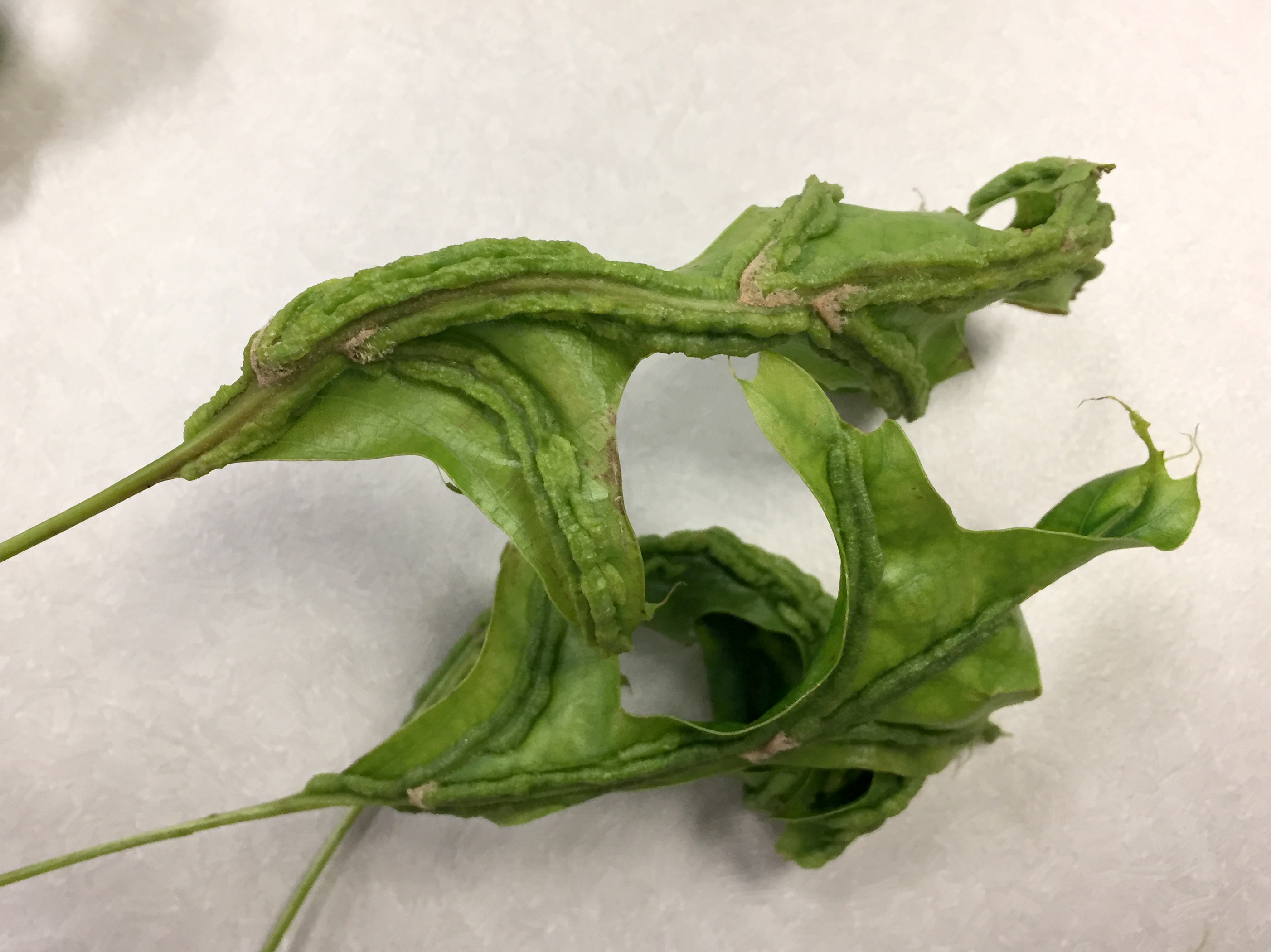Oak vein pocket gall: A bizarre looking leaf injury caused by a tiny insect
Feeding damage by this gall midge causes bizarre overgrowths of plant tissues on red oak leaves.

Some very strange-looking red oak leaves were brought into my office yesterday, June 6. When I first looked at their curled and twisted shape and thickened growth along the veins, I wondered if I was seeing herbicide injury. Further questions to the person who brought the samples determined that no other plants in the area showed these peculiar symptoms—only the red oak tree was affected. All the leaves had the same twisted, thickened leaves. Could this be a gall? As it turns out, it was.
There were tiny (less than a tenth of an inch), legless, off-white maggots inside the swellings around the leaf veins. This particular gall, oak vein pocket gall, is caused by a small fly with the unwieldy name of Macrodiplosis quercusoruca.
The adult midges responsible for oak vein pocket gall lay eggs on the leaves as the oaks begin their spring growth. After the eggs hatch, the resulting maggots move to the leaf veins to feed. Within a few days, the plant forms a protective covering for the developing maggots. The damage from their feeding causes the plant to respond by increasing the production of plant growth hormones, forming abnormal growths (galls) that surround the insects.

Thickened growth along the vein.
The insects stay in the leaf galls until mid-summer to late fall when they drop to the ground and enter a resting stage until the following spring to complete their development and become adults. As unsightly as the leaves look, the damage is largely cosmetic and does not seriously impact the health of the tree.
Galls can be caused by organisms other than insects and mites. Nematodes, fungi, bacteria and viruses can also cause galls. I have long had an interest in plant galls that are caused by insects. It is fascinating to see how plants respond to the feeding or egglaying of certain insects and mites with weird and sometimes beautiful galls. Among the insects and mites that cause galls are eriophyid mites, psyllids, aphids, adelgids, gall wasps and gall midge.
If you share a fascination for plant galls, visit the British Plant Gall Society website, where you can purchase books with many photos and descriptions of plant galls. You can also follow British Plant Galls on Twitter.



 Print
Print Email
Email
